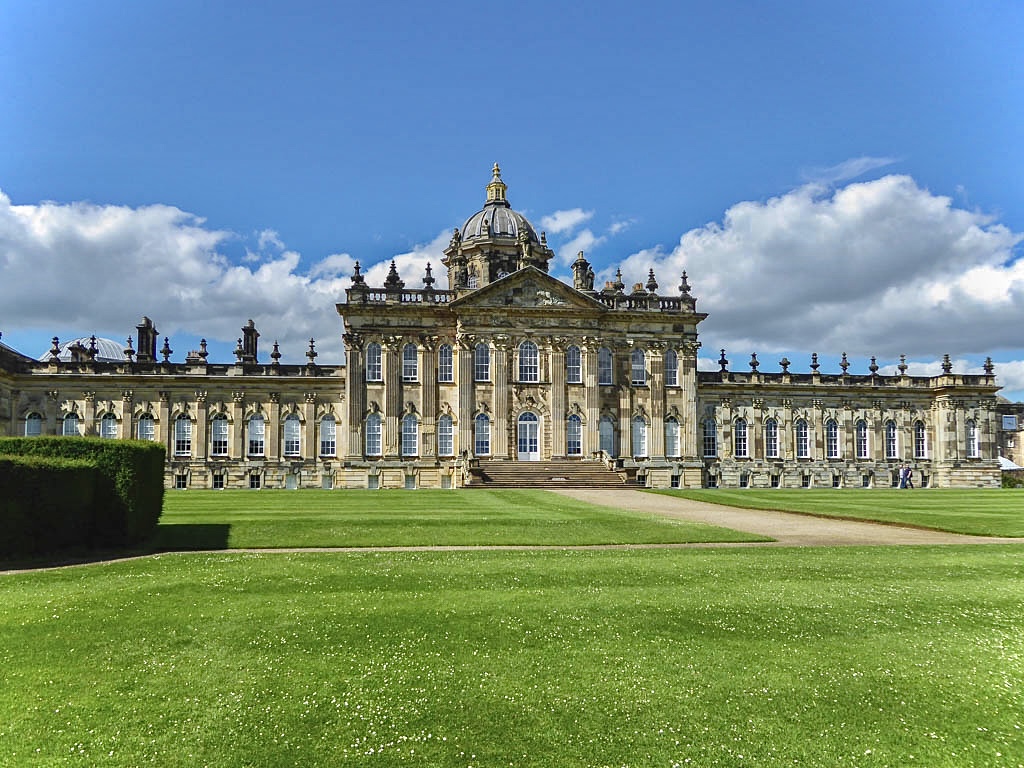Yorkshire, UK, is renowned for its rich history and stunning landscapes. Among its many treasures, Castle Howard stands out as a beacon of historical significance and architectural marvel. Castle Howard invites visitors to step back in time and immerse themselves in centuries of history. From its awe-inspiring architecture to its lush gardens and priceless art collections, this magnificent estate promises an unforgettable experience for history enthusiasts and casual tourists alike.
Overview of the Rich and Fascinating History of Castle Howard
Castle Howard’s construction began in 1699 under the guidance of Charles Howard, 3rd Earl of Carlisle. It was a collaborative effort between playwright John Vanbrugh and architect Nicholas Hawksmoor, resulting in a unique fusion of Baroque and Palladian architectural styles. Over more than a century, the estate underwent various expansions and renovations.
For over 300 years, Castle Howard has served as the ancestral home of the Howard family. The family’s legacy is deeply intertwined with British history, with its members playing roles as politicians, military figures, and patrons of the arts. Throughout its history, the estate has hosted grand events like lavish balls and received visits from royalty, all while navigating challenges posed by wartime.
The house is renowned for its extensive collection of art and antiques, gathered and preserved across generations. This collection includes paintings, sculptures, furniture, and artifacts spanning diverse periods and cultures. Notably, the Long Gallery houses a particularly impressive array of Old Master paintings.
Castle Howard has gained global recognition through its appearances in numerous films and TV series, most famously in the 1981 adaptation of Evelyn Waugh’s novel “Brideshead Revisited.” These portrayals have solidified its status as a cultural landmark.
Over the years, Castle Howard has undergone meticulous restoration and conservation efforts to safeguard its historical and architectural significance. The Howard family remains steadfast in their commitment to preserving and sharing this treasured estate for the enjoyment of future generations.
Let’s Explore The Top 4 Historic Treasures That Make Castle Howard a Must-visit Destination:
1. The Atlas Fountain:
 The Atlas Fountain at Castle Howard was originally designed as the centerpiece of William Andrews Nesfield’s garden plan between 1850 and 1853. It was initially surrounded by an intricate parterre featuring geometric patterns made from low box hedging, colored gravels, and herbaceous plants. Although the parterre was removed in the 1890s, the fountain itself remained.
The Atlas Fountain at Castle Howard was originally designed as the centerpiece of William Andrews Nesfield’s garden plan between 1850 and 1853. It was initially surrounded by an intricate parterre featuring geometric patterns made from low box hedging, colored gravels, and herbaceous plants. Although the parterre was removed in the 1890s, the fountain itself remained.
Crafted from Portland stone by Victorian sculptor John Thomas, the fountain includes a large figure of Atlas, a decorated basin, and four tritons holding conch shells. These massive pieces, weighing over 20 tons, were transported in sections by rail from London. The globe atop the fountain is copper with a gilded band depicting the signs of the zodiac.
The fountain operates using jets and cascades fed from pipes in a chamber below, designed by engineer James Easton. Water is sourced directly from Ray Wood Reservoir, located a quarter mile northeast of the fountain. The natural drop in elevation (about 70 feet from the reservoir) provides enough gravitational pressure to power the jets, eliminating the need for mechanical pumps. The fountain was first activated in October 1853.
2. The Mausoleum:
 Historically, mausoleums were originally grand constructions built to honor deceased leaders or prominent individuals. Over time, smaller mausoleums gained popularity among the gentry and nobility in various countries. In the Roman Empire, these structures were often found in necropolises or along roadsides, with remnants visible along the via Appia Antica outside Rome.
Historically, mausoleums were originally grand constructions built to honor deceased leaders or prominent individuals. Over time, smaller mausoleums gained popularity among the gentry and nobility in various countries. In the Roman Empire, these structures were often found in necropolises or along roadsides, with remnants visible along the via Appia Antica outside Rome.
With the rise of Christianity, mausoleums fell out of use for a period. However, they later experienced a revival in popularity across Europe and its colonies during the early modern and modern eras. A mausoleum typically houses a burial chamber, either completely above ground or within a vault beneath its main structure.
The Howard family mausoleum serves as the final resting place for multiple generations of the Howard family. This impressive monument stands as a testament to their enduring legacy and significant impact on the region.
3. The Temple of the Four Winds:
As you finish your visit to Castle Howard, you depart not just with memories, but also with a profound appreciation for its historical treasures and enduring legacy.
ALSO READ: Discover Howard House: Your Next Must-See UK Adventure Spot


 The Temple of the Four Winds sits at the eastern end of Temple Terrace, offering breathtaking views across the hills. Designed by Vanbrugh, the temple was left unfinished upon his death in 1726. It wasn’t until 1738 that the interiors were finally adorned by the stucco artist Francesco Vassalli. Originally intended as a place for relaxation and reading, beneath it lies a cellar where servants once prepared food for the family above.
The Temple of the Four Winds sits at the eastern end of Temple Terrace, offering breathtaking views across the hills. Designed by Vanbrugh, the temple was left unfinished upon his death in 1726. It wasn’t until 1738 that the interiors were finally adorned by the stucco artist Francesco Vassalli. Originally intended as a place for relaxation and reading, beneath it lies a cellar where servants once prepared food for the family above. Ray Wood is a captivating woodland garden boasting a diverse collection of plants that offer something of interest year-round. However, the garden truly dazzles during spring when rhododendrons burst into a spectacular display of colors.
Ray Wood is a captivating woodland garden boasting a diverse collection of plants that offer something of interest year-round. However, the garden truly dazzles during spring when rhododendrons burst into a spectacular display of colors.


Join The Discussion